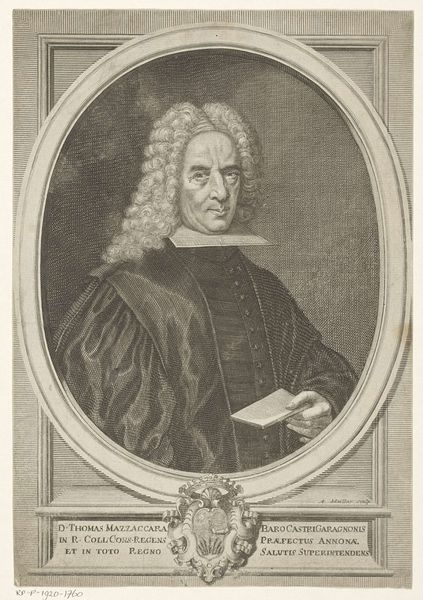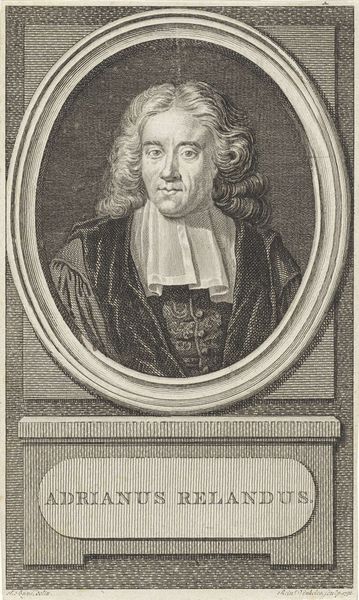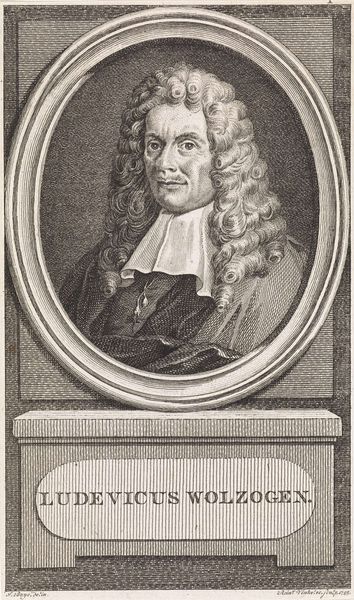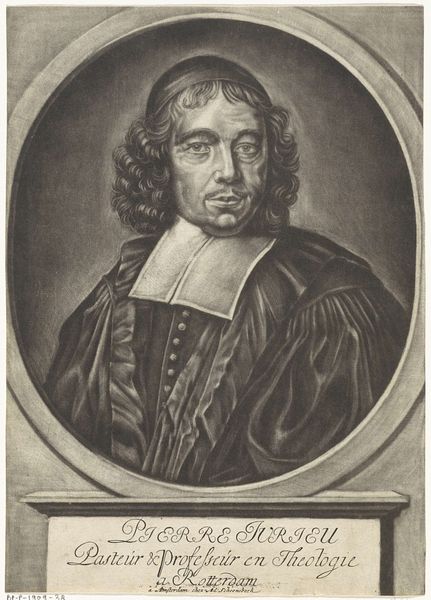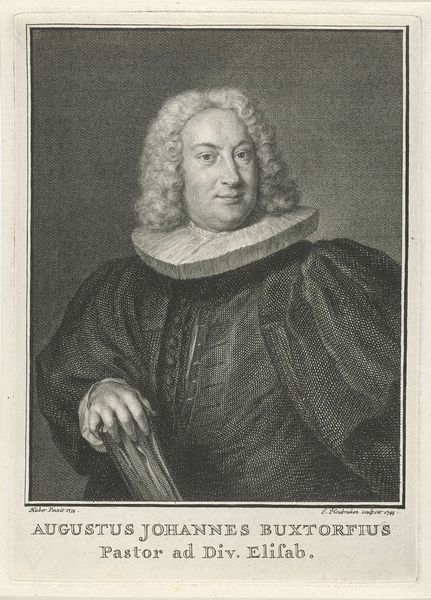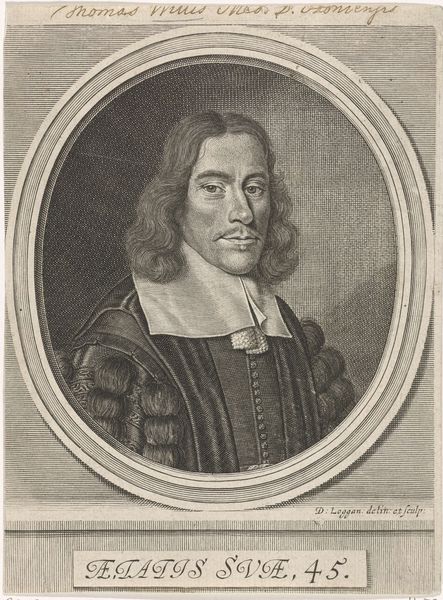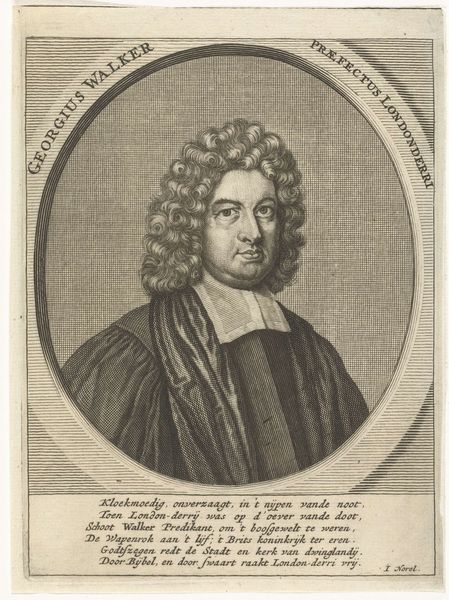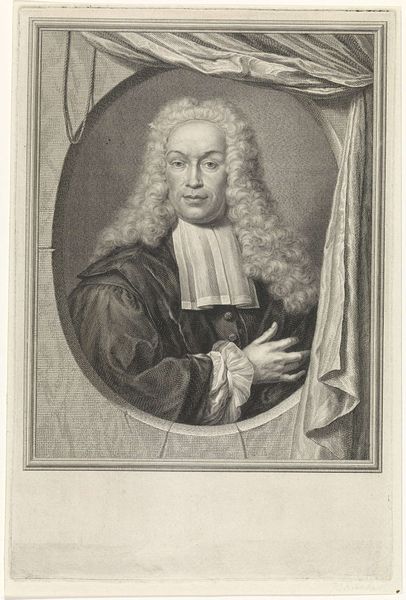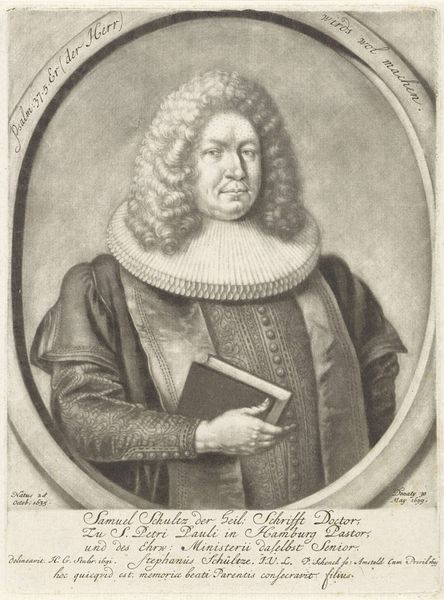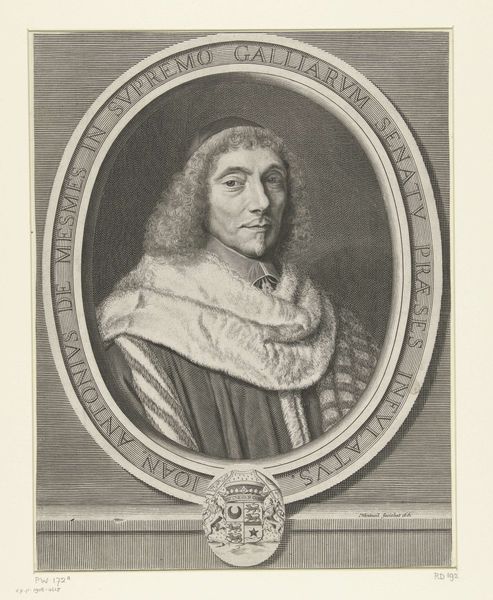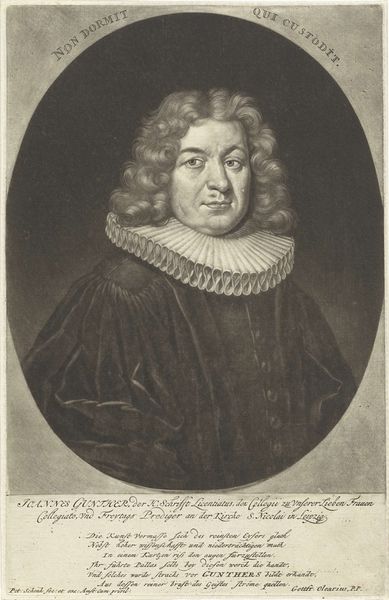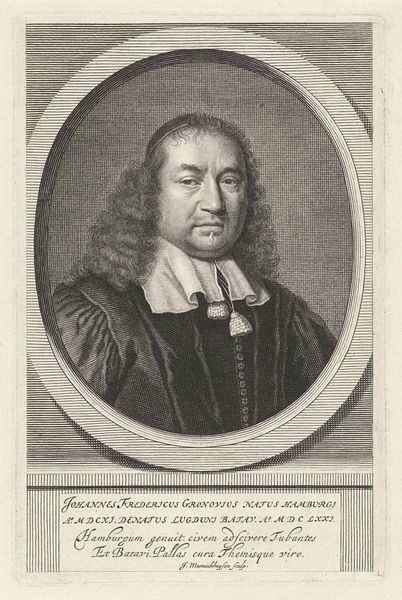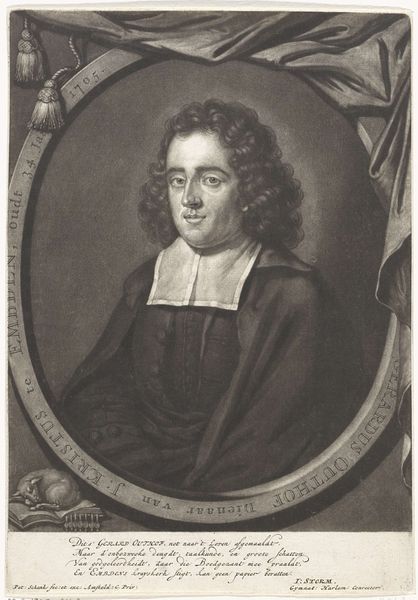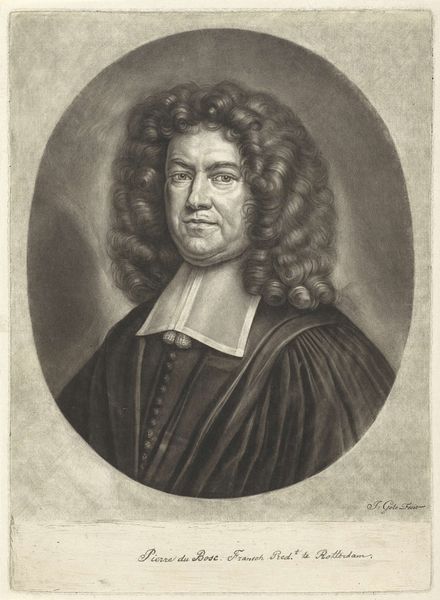
engraving
#
portrait
#
baroque
#
old engraving style
#
engraving
Dimensions: height 338 mm, width 243 mm
Copyright: Rijks Museum: Open Domain
Johannes Klopper created this engraving of Elie Benoit, a Walloon clergyman in Delft, sometime between 1667 and 1734. Portraits in this period were crucial in defining social roles and religious identity. Benoit's clothing, the dark robe and white collar, visually signal his religious position, while his elaborate wig would have indicated his social standing within the community. The swirling text surrounding the central image is in French and refers to God, the Walloon church, the King, and Benoit's birth in Paris. This image offers insight into the dynamics of religious life in the Dutch Republic and the history of the Walloon community, who were French-speaking protestants. We can research the history of the Walloon church and the role of clergymen like Benoit through archival records and theological texts from this period. These sources shed light on the networks of religious and political allegiance in the 17th and 18th centuries. Ultimately, this portrait reminds us that art is embedded in social and institutional contexts.
Comments
No comments
Be the first to comment and join the conversation on the ultimate creative platform.
